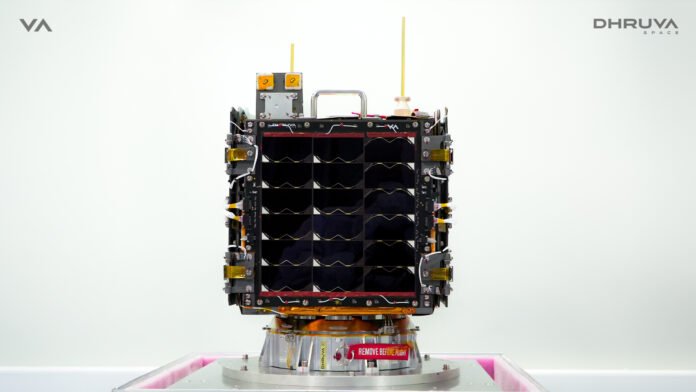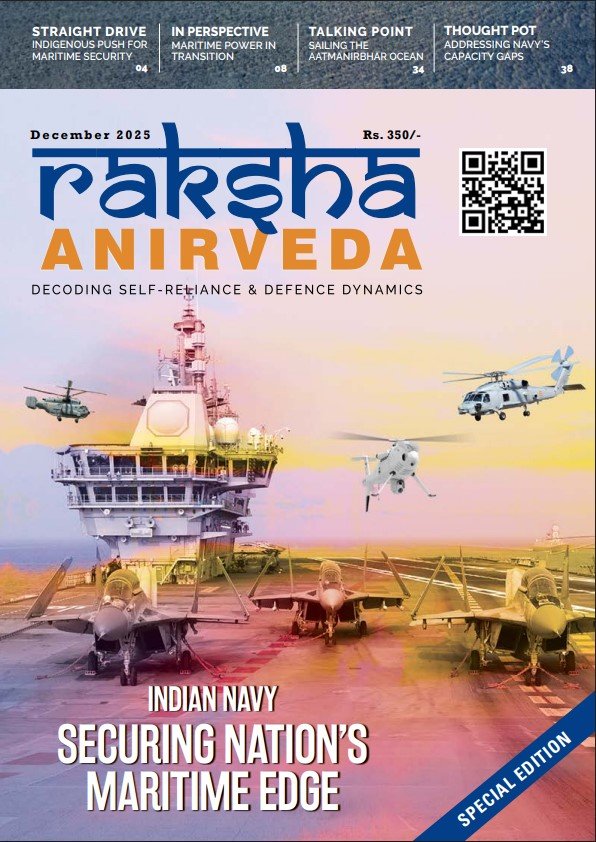Hyderabad: Full-stack Space Engineering solutions provider, Dhruva Space is set to launch its first commercial Space mission, LEAP-1, marking a significant milestone in the company’s journey from successful technology demonstrations to customer-driven satellite deployments.
Dhruva Space’s LEAP-1 mission on the indigenously-developed P-30 satellite platform will fly two distinct missions: Akula Tech’s Nexus-01 mission comprising an advanced Artificial Intelligence (AI) module, and Esper Satellites’ OTR-2 mission featuring a hyperspectral imager.
The LEAP-1 mission is officially slated to launch aboard SpaceX’s Falcon 9 in Q3 2025, marking not just a significant Indo-Australian collaboration, but also growing support from the United States in Dhruva Space’s global commercial journey.
This milestone mission is Dhruva Space’s first commercial deployment following the successful in-orbit qualification of its P-30 satellite bus during the LEAP-TD mission on ISRO’s PSLV-C58 POEM-3 in January 2024. The transition from qualification to commercial operations cements Dhruva Space’s commitment to offering hosted payload solutions at scale for global customers. Dhruva Space’s hosted payload offering integrates Ground Station-as-a-Service (GSaaS) and its proprietary Integrated Space Operations & Command Suite (ISOCS) for real-time mission management and payload data downlinking.
Global Tech, Earth to Orbit
This mission represents a collaborative leap forward: combining Akula Tech’s pioneering AI technology with Esper Satellites’ hyperspectral imaging capabilities, and deploying them on Dhruva Space’s modular and payload-agnostic P-30 platform. This fusion of technologies addresses a wide range of applications across defence, disaster response, agriculture, mining, and environmental management.
Akula Tech’s AI module introduces a new benchmark for on-orbit intelligence. It is capable of on-board data processing and AI/ML model re-training using satellite-generated data, offering significant speed advantages for time-sensitive missions. Esper Satellites’ imager, meanwhile, is set to redefine remote sensing with its ability to deliver highly detailed, spectrally-rich Earth Observation data via Esper’s EarthTones API.
Dhruva Space also unveiled the official LEAP-1 mission patch, designed to symbolise the synergy of Indo-Australian-American collaboration and forward-thinking innovation. The patch blends the visual identities of the partner organisations with key motifs representing hyperspectral Earth Observation, AI, and Space heritage, while also reflecting not just the heart of the LEAP-1 mission, but also its purpose, forging strategic partnerships to serve humanity through Space.
“Aiming for launch, this mission signifies a new era in Artificial Intelligence-powered satellite technology, to help with Defence, emergency, climate and many other strategic objectives. This mission will be the first step towards Akula Tech’s vision of developing next-generation satellites in Australia,” commented Preetham Akula, CEO, Akula Tech.
According to Nishq Ravindranath, Chief AI Officer, Akula Tech, the Nexus-01 mission represents a breakthrough in Space-based Artificial Intelligence. Our Space-ready AI model optimisation technology allows us to optimise and compress any Geospatial AI/ML models to run efficiently on the edge in Space, supporting applications like fire detection, anomaly detection, and spectral analysis that provide near real-time insights to Government and Defence personnel.
“Furthermore, these models will improve themselves over time by continuously retraining on live sensor data. This launch will give flight heritage to five of our distinct software products while enabling the uplink of newer AI/ML models directly to the satellite throughout the mission lifetime. Most importantly, it establishes the foundation for an autonomous, coordinated constellation of Earth Observation satellites that work together as a swarm, essentially placing a Geospatial Intelligence analyst directly in Space to sense and detect critical features of interest,” Ravindranath added.
Shoaib Iqbal, Co-founder and CEO, Esper Satellites, stated, “LEAP-1 represents a major milestone for Esper as we launch our fourth satellite mission with OTR-2, following the successful deployment of OTR-1 and our dual-satellite OTR-X mission. What makes this achievement even more remarkable is that we’ve funded our entire OTR campaign for under $1 million, proving that cutting-edge hyperspectral Earth Observation technology can be both accessible and cost-effective.”
“This mission validates our lean approach to Space Technology development. Our hyperspectral imager aboard the LEAP-1 mission will deliver spectrally-rich Earth observation data through our EarthTones API, demonstrating how Australian innovation can compete on the global stage. The partnership with Dhruva Space provides us with the perfect platform to showcase our technology’s capabilities while building towards our vision of a comprehensive hyperspectral constellation that will revolutionise environmental monitoring and industrial applications worldwide,” added Przemyslaw Lorenczak, Co-founder, Esper Satellites.
In anticipation of LEAP-1, Sanjay Nekkanti, CEO & Co-founder, Dhruva Space, said, “Following a successful qualification of the P-30 onboard ISRO’s PSLV-C58, Dhruva Space is excited to take its indigenously-developed P-30 satellite platform to global market. We are confident this multilateral, collaborative approach drives innovation, brings down costs, and invests in commercial capabilities to grow the business opportunities that can serve other customers and further foster a global Space economy. Teaming up with our commercial partners in Australia creates remarkable opportunities for Indo-Australian Space business, which will, in turn, foster a long-term partnership.”
“India is already a key economic and regional partner and we see this mission symbolic of India’s status as a fast-growing Space program. We are also happy to share that our LEAP series of hosted payload missions continues to thrive, and we are observing traction from private Space players in India, Italy, France, and more,” Nekkanti added.
“Dhruva Space would also like to thank ISRO and IN-SPACe for fostering an environment that engenders global Space partnerships from Indian soil. We also extend sincere gratitude to Enrico Palermo, Head – Australian Space Agency, whose visit to our office in Hyderabad, India, in September 2022 led to a fruitful engagement with a delegation of Australian Space startups visiting us. This paved the way for several rewarding discussions around Indo-Australian Space business, which has, in turn, cultivated long-term partnerships. We’d also like to thank SpaceX for their support with regards to mission readiness,” Nekkanti summed up.
LEAP-1 marks a new chapter in Dhruva Space’s story: from building capability to delivering customer missions with impact. The company now stands at the cusp of scaling up its commercial payload hosting operations, enabling transformative possibilities in global Space applications.






